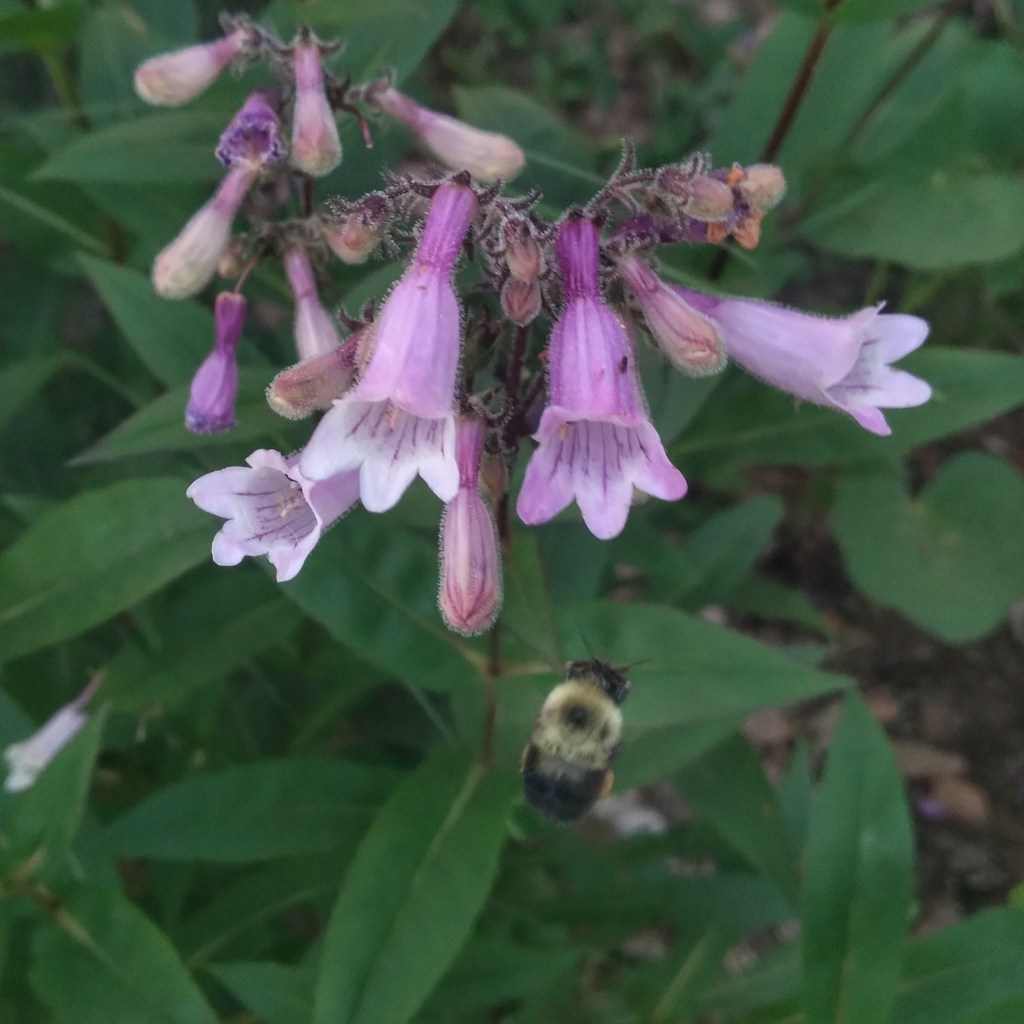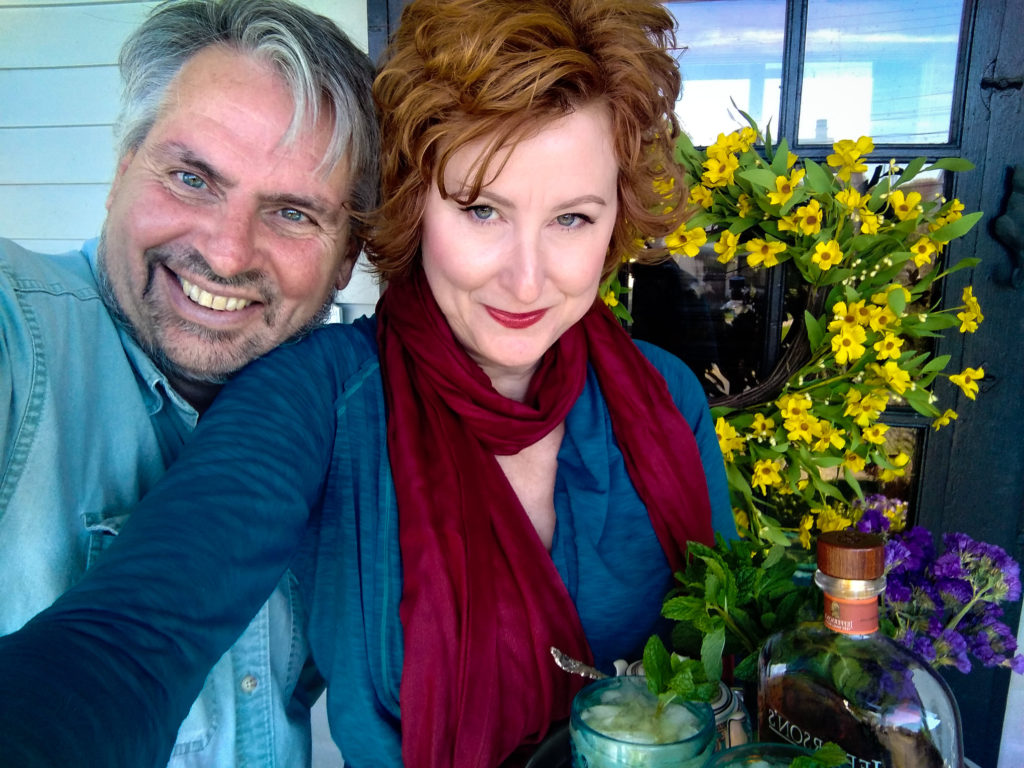Of all the months here in western Pennsylvania, October is surely the most splendid. Its vibrant warm colors splash vividly across the blue-gray autumn sky. The bracing scent of leaf litter permeates the crisp air and invigorates the soul. The faded glory of summer’s once-spectacular blossoms nod off to slumber in their softly muted orange and yellow leafy beds. Asters and Goldenrod sprawl their chaotic, blossom-heavy branches all over my flowerbeds. It’s the perfect time to walk around and reminisce on all that I learned about this little habitat world I’ve nurtured for the last year. I still have so much yet to learn. Especially about the bees.


I’m almost ashamed to admit that until a few years ago, I never knew that honeybees are not native to North America. Introduced by Europeans in the 17th century, honeybees have since naturalized across much of the North American continent, and have earned a well-deserved place of respect in the collective imagination of most Americans. Their highly organized, industrious nature and their critical role in pollinating an abundance of fruit and vegetable crops, made the non-native Honeybee an understandable symbol of hope to the non-native peoples who pushed across the continent during the 18th and 19th centuries.

In recent years, our beloved introduced honeybee colonies have suffered from devastating declines related to colony collapse disorder, as well as the negative consequences of parasites, pesticides, and poor nutrition (click here to read more about the demise of honeybees). Calls to “Save the Honeybees!” have been widely embraced by schoolchildren and adults alike; yet, little attention has been given to the demise of those other, equally important pollinators who have also suffered decline.

Perplexing Bumble Bee (Bombus perplexus) on Butterfly Milkweed in our East Porch Flower Garden.

Oblique Streaktail Hoverfly (Allograpta obliqua) on a Purple Coneflower in our Driveway Flower Garden.
Although they do not offer the delightful by-product of honey, our many native species of bees, flies, and wasps nonetheless also play a hugely important role in pollinating wildflowers as well as commercial crops. Like honeybees, their numbers have also been decimated by human activities such as the use of pesticides and loss of habitat. Unlike introduced honeybees, however, our indigenous North American bumblebees, flies, and wasps have co-evolved with the same native plants that many birds and smaller mammals rely upon for food, so their role as pollinators to native wildflowers is absolutely critical for fruit and seed production. Without the pollination of our indigenous plants, entire regional ecosystems are thrown out of balance as birds and small mammals die off from lack of food, and eventually our larger predator animals would suffer the same fate. This is why it is more important than ever, that we try to provide as much native habitat as possible, especially in our landscaping choices. Eschewing non-native garden favorites like Butterfly Bush, Daylilies, or Boxwoods (which aside from sometimes offering nectar, actually provide nothing in terms of valued sustenance), can go a long way in helping to restore your region’s faltering ecosystem.
One great indicator of progress toward that restoration is an abundance of pollinators like bumblebees, mining bees, hoverflies, and wasps. Although not as beautiful and showy as our beloved native butterflies, the presence of these humble little insects in your yard, is a great barometer of a healthy, thriving mini-habitat. And the more healthy little habitats we all can create, the more they will coalesce and overlap into larger and larger areas of thriving habitat.

Hairy-Banded Mining Bee (Andrena hirticincta) on Goldenrod in our Blackberry & Raspberry Brambles

Four-Toothed Mason Wasp (Monobia quadridens) on Pearly Everlasting blossoms in our driveway flower garden.

A Transverse-Banded Flower Fly (Eristalis transversa) on a Coreopsis flower in our west porch flower garden.

Metallic Epauletted-Sweat Bee (Augochloropsis metallica) on Philadelphia Fleabane in our Maple Garden

Since committing to only buying native plants from now on, as well as replacing as many non-native plants as possible (and I have a lot!) I’ve gradually been training myself to unlearn the entire notion of ‘weeds’. Volunteer plants that I used to consider to be weeds and pull from my flower gardens, like Fleabane, Aster, and Boneset, I now embrace wholeheartedly. Although it’s only been a few years since I’ve appreciated the profoundly important value of native plant landscaping, I’m already starting to see the lively indicators that my yard is no longer as ‘dead’ as it used to be. Just this past spring and summer, I’ve documented almost twenty species of native bees, flies, and wasps on our tiny in-town lot! Each one has a special niche function in maintaining the fragile balance of our local ecosystem and I’m always so excited each time I identify a new species. In that time, I’ve also noted a few new species of birds to our yard, especially Downey Woodpeckers, Black-Capped Chickadees, and the occasional White-Breasted Nuthatch–all of whom have presumably discovered the greater abundance of caterpillars, larvae, insects, and seeds now offered by my expanded native plantings. None of these new birds species, however, is quite so precious to us our our beloved Gray Catbirds. Our hope is that with each passing year, our yard will continue to be graced by these exuberant creatures as they nourish themselves from the abundance of insects and fruits offered by our ever-expanding beds of native plants.












WRITTEN BY STACEY. ALL PHOTOS TAKEN BY STACEY IN OUR TINY YARD RIGHT IN THE HEART OF OUR LITTLE TOWN OF INDIANA, PENNSYLVANIA.
Watercolor-style images generated by DALL-E/OpenAI
Be sure to check out all of the other great stories On The Road at Catbirdlife.com. Click HERE to subscribe or you may follow us on Instagram or Twitter.




Thanks.
Thank you! 🙂
What an informative post! You both have inspired me to delve deeper into the world of native insects and plants. I must admit, it’s a lot of fun! It’s a great opportunity to learn something new and share it with others.
Thanks so much for your kind words of support! It makes me so happy that you found something inspiring in our post. We deeply appreciate this! 😊